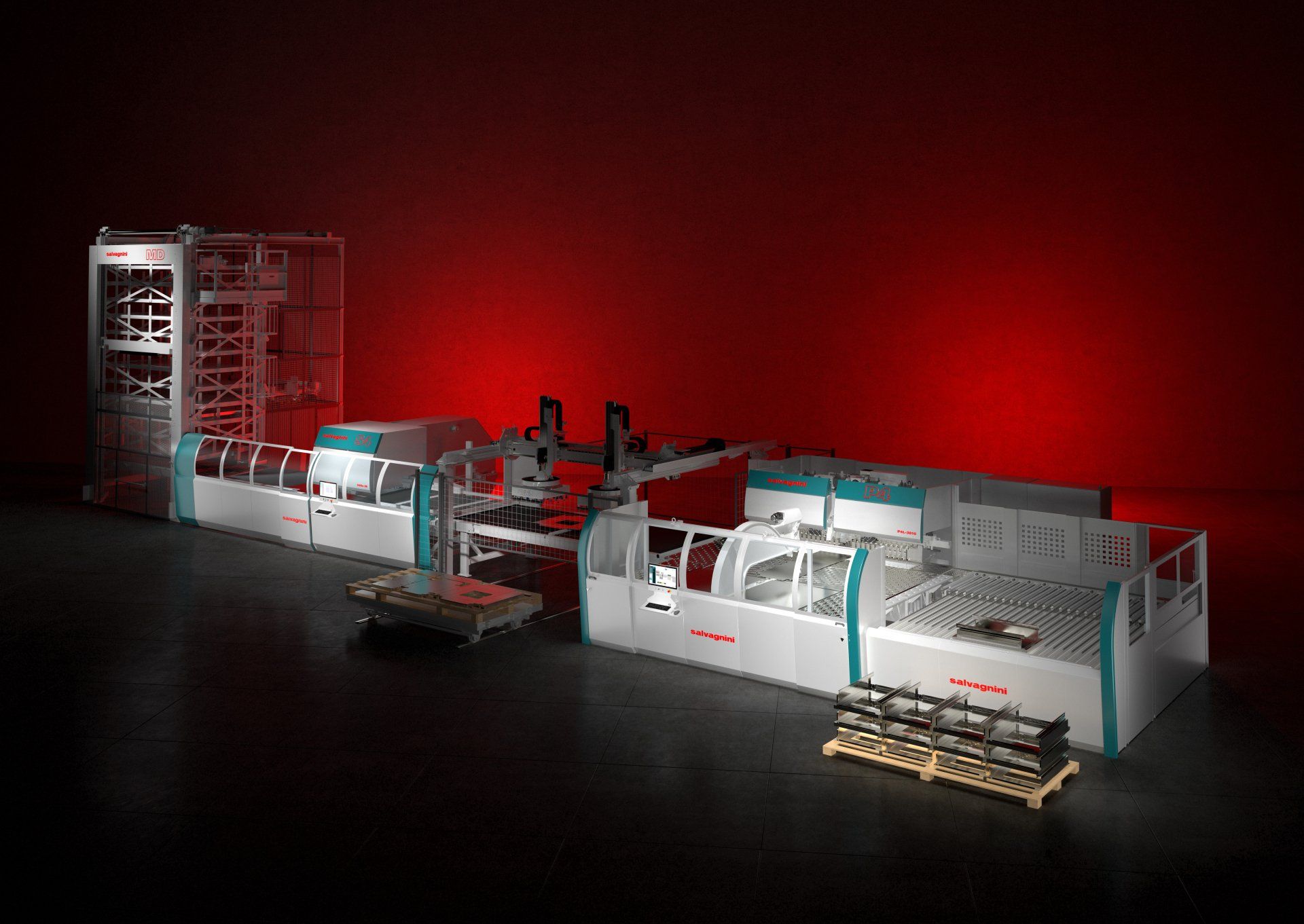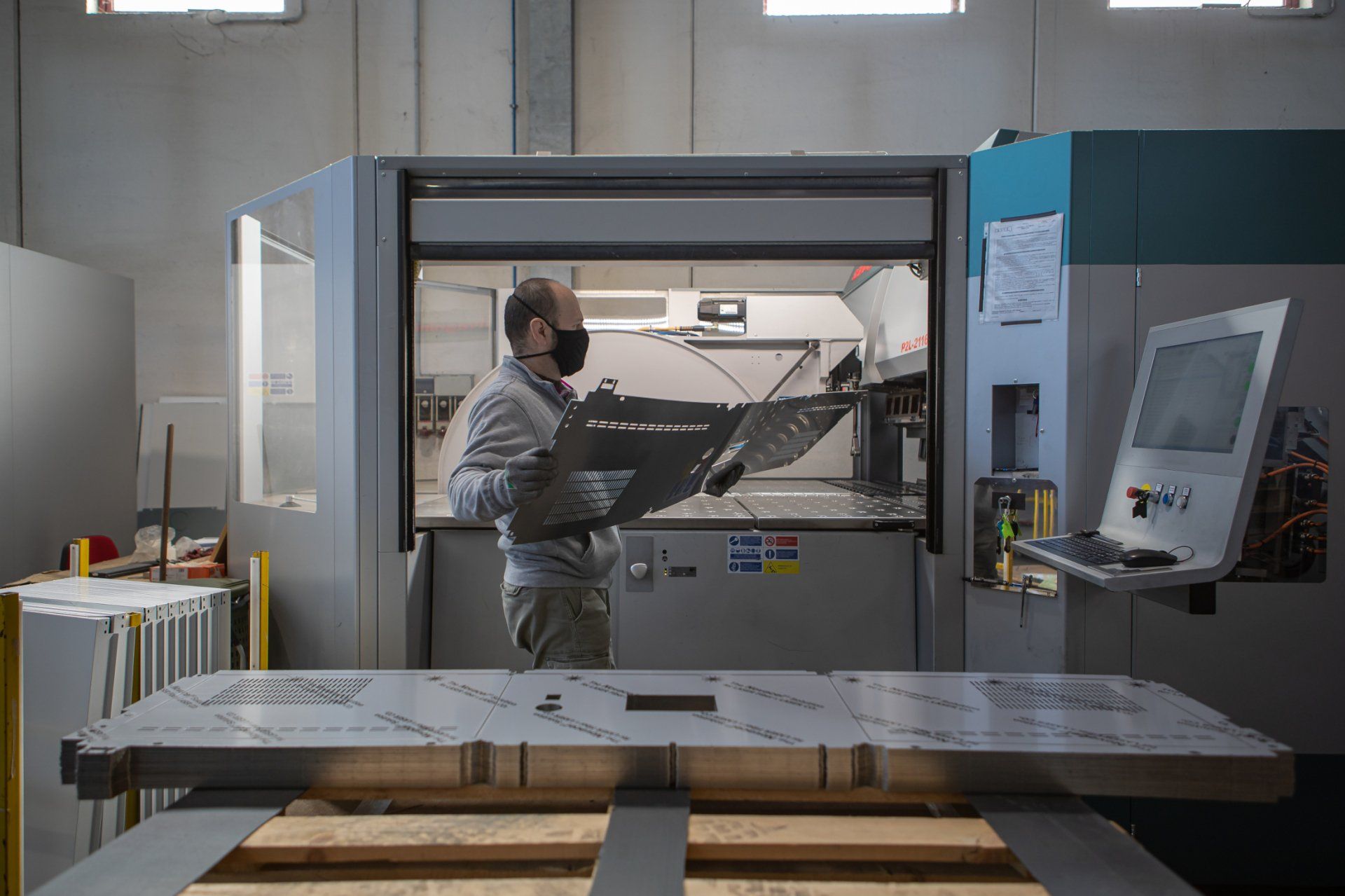In sheet metal working, the traditional make-to-stock strategy, characterized by large batches, is being increasingly replaced by make-to-order, just-in-time, lean strategies with small and medium or even single batches and a more and more variable production mix.
To respond to this variability, the market is looking more and more to flexible production systems. Being competitive today does not merely mean having fast single part production: the challenge lies in production efficiency, understood as the ability to move from one item to the next with the shortest re-tooling time, whatever the geometric and mechanical characteristics of the metal sheet and the type and number of jobs. These flexible systems are a decisive factor not just for managing production today, but also for improving quality and reducing lead times and scrap.
Ahead of this trend, some time ago Salvagnini developed and made available artificial vision applications on its laser systems, allowing operators to effortlessly solve some of the everyday problems involved in their work.
These lean, easy-to-use solutions have the advantage of increasing flexibility and extending the sectors for laser cutting applications.
SIGN UP TODAY TO STAY IN THE KNOW OF EVERYTHING THAT SALVAGNINI HAS TO OFFER
Rapid industrial developments of recent years continue to set tough challenges.
Because industry has changed: flexibility and efficiency are crucial requirements for managing increasingly smaller batches, rapid item turnover rate and tight lead times.
We will get back to you as soon as possible
Please try again later
“AVS turns laser cutting into a workstation downstream of punching activities,” explains Pierandrea Bello, Salvagnini Product Manager for laser technologies. “It can even center punched or bent parts, reducing sheet metal centering times compared to standard alignment with capacitive sensor.”
AVS is an added value because:
- it extends the possible applications of the laser system, turning it into a workstation downstream of other processes;
- it further increases alignment precision;
- it reduces sheet metal alignment times.
“The AVS camera aligns the sheet metal in the work area extremely precisely,” Bello continues. “With AVS and the largest sheets, the alignment time is shorter than with a standard capacitive sensor. AVS is indispensable for format productions, where the size of the cut part corresponds exactly to that of the starting sheet.”
Centering the parts on machinings already made on the sheet metal, AVS also extends the possible applications of the laser system. And on board the machine, activities are much faster, because most of the preparatory work is done in the office. STREAM, Salvagnini’s software suite, allows the operator to pass quickly, and almost automatically, from the punching machine program to the laser cutting program. The programmer can interactively select the machinings already made and use them as a reference for centering: the software already knows their position and, in the case of formings, takes their presence into account so as to avoid potential collisions. The system offers full flexibility: the number of centering operations required may vary according to the precision needed, while the centering points on the same sheet may differ from one part to the next, allowing different parts to be machined and reducing scrap.
“With a limited investment, AVS helps to run jobs containing both forming operations and irregular cuts. Obviously, AVS doesn’t solve intermediate handling costs, or the need to use two machines, but in some cases it can be a really interesting alternative. And parts can be customized at the last minute, both on the flat blank and on parts that have already been bent. This is a clear advantage, for example for those who work according to expected orders, with a store of semi-finished parts that have to be customized very quickly. All in all, AVS is a really multi-purpose solution. It can help to manage a number of everyday activities, and helps to make the very most of the laser system, above and beyond its traditional applications,” Bello concludes.
Check out our additional articles!
AVS
All the benefits of artificial vision
GOING GREEN
Panel bending is green at last, with Salvagnini
Flexible Automation
Automation according to Salvagnini
Digital Jobshops
Upstream from the workshop: increasing programming efficiency

salvagnini america inc.
27 Bicentennial Court
Hamilton, Ohio 45015 USA
513-874-8284
info@salvagnini.com
Salvagnini America Inc,





